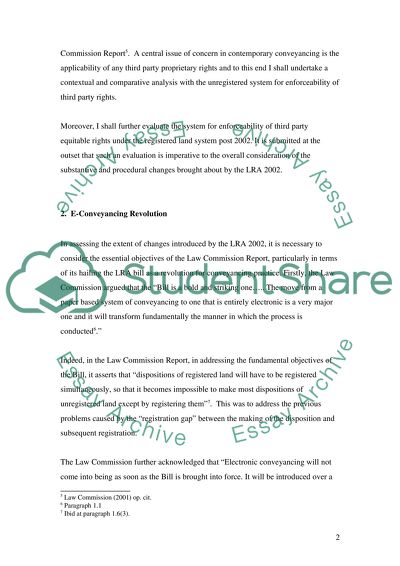Cite this document
(“Outline and critically examine the procedural and substantive changes Essay”, n.d.)
Outline and critically examine the procedural and substantive changes Essay. Retrieved from https://studentshare.org/miscellaneous/1552405-outline-and-critically-examine-the-procedural-and-substantive-changes-in-the-law-on-land-registration-brought-about-by-the-land-registration-act-2002-is-land-r
Outline and critically examine the procedural and substantive changes Essay. Retrieved from https://studentshare.org/miscellaneous/1552405-outline-and-critically-examine-the-procedural-and-substantive-changes-in-the-law-on-land-registration-brought-about-by-the-land-registration-act-2002-is-land-r
(Outline and Critically Examine the Procedural and Substantive Changes Essay)
Outline and Critically Examine the Procedural and Substantive Changes Essay. https://studentshare.org/miscellaneous/1552405-outline-and-critically-examine-the-procedural-and-substantive-changes-in-the-law-on-land-registration-brought-about-by-the-land-registration-act-2002-is-land-r.
Outline and Critically Examine the Procedural and Substantive Changes Essay. https://studentshare.org/miscellaneous/1552405-outline-and-critically-examine-the-procedural-and-substantive-changes-in-the-law-on-land-registration-brought-about-by-the-land-registration-act-2002-is-land-r.
“Outline and Critically Examine the Procedural and Substantive Changes Essay”, n.d. https://studentshare.org/miscellaneous/1552405-outline-and-critically-examine-the-procedural-and-substantive-changes-in-the-law-on-land-registration-brought-about-by-the-land-registration-act-2002-is-land-r.


